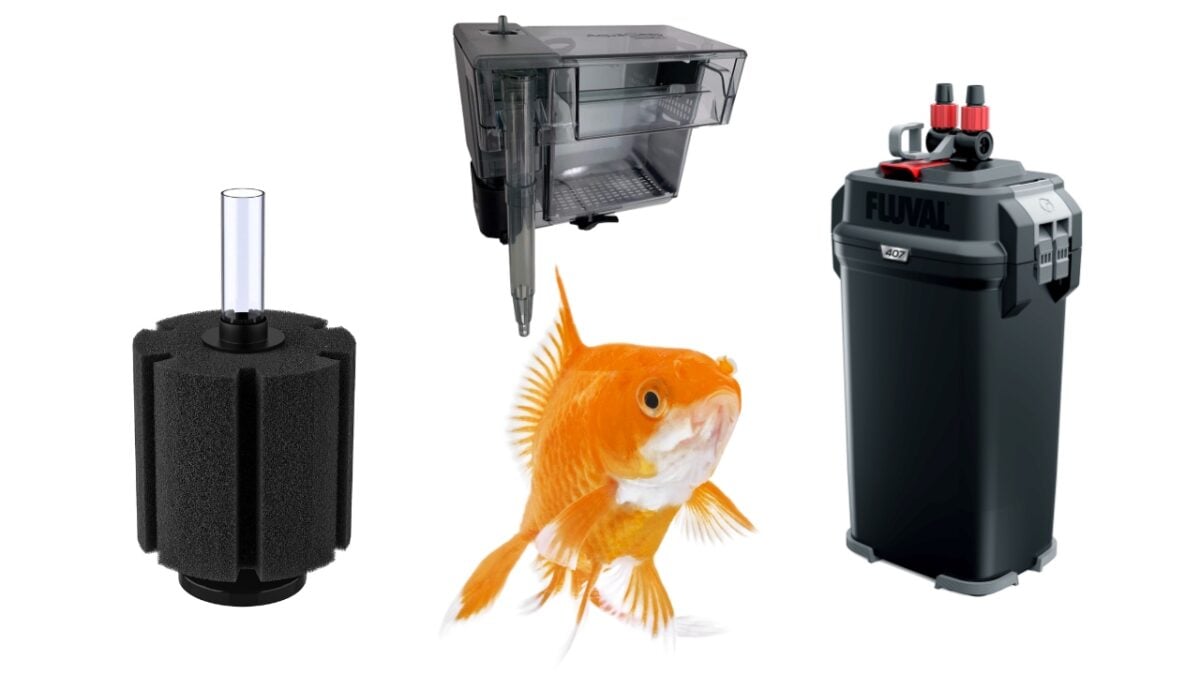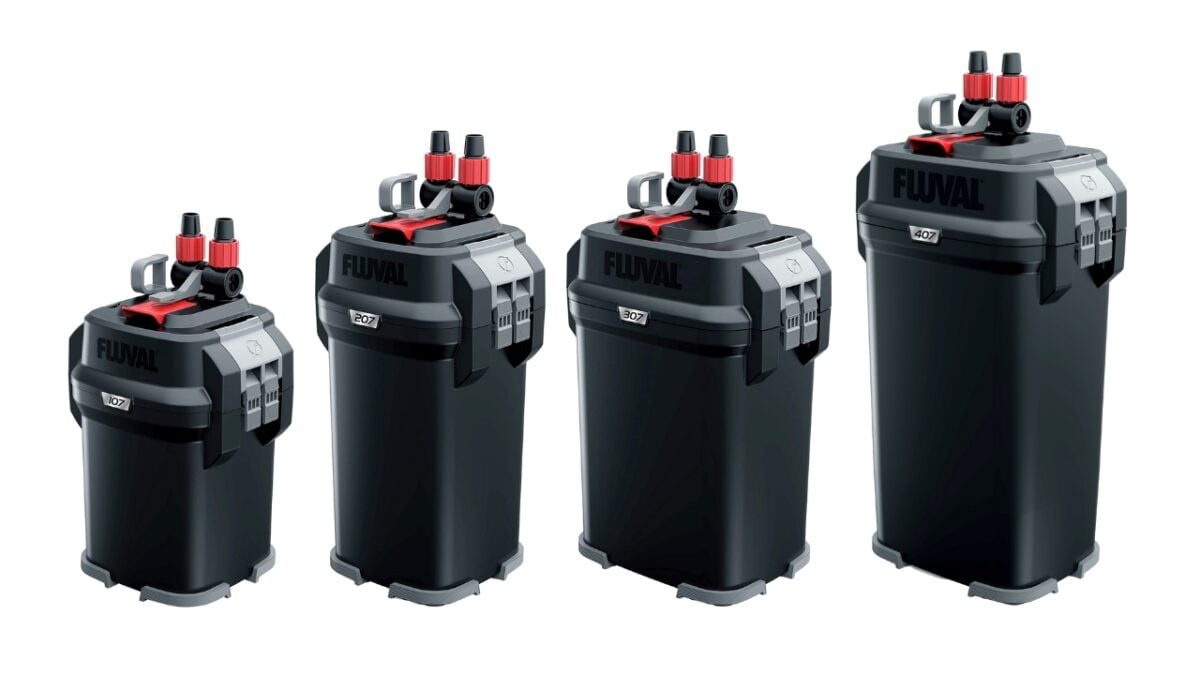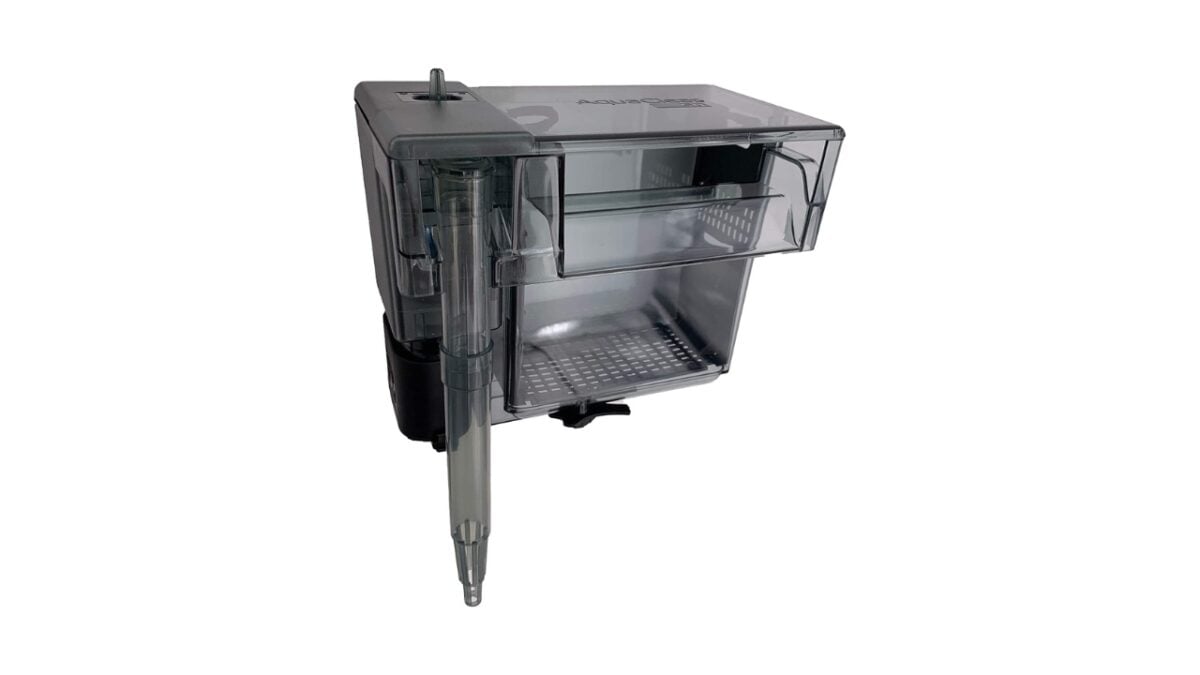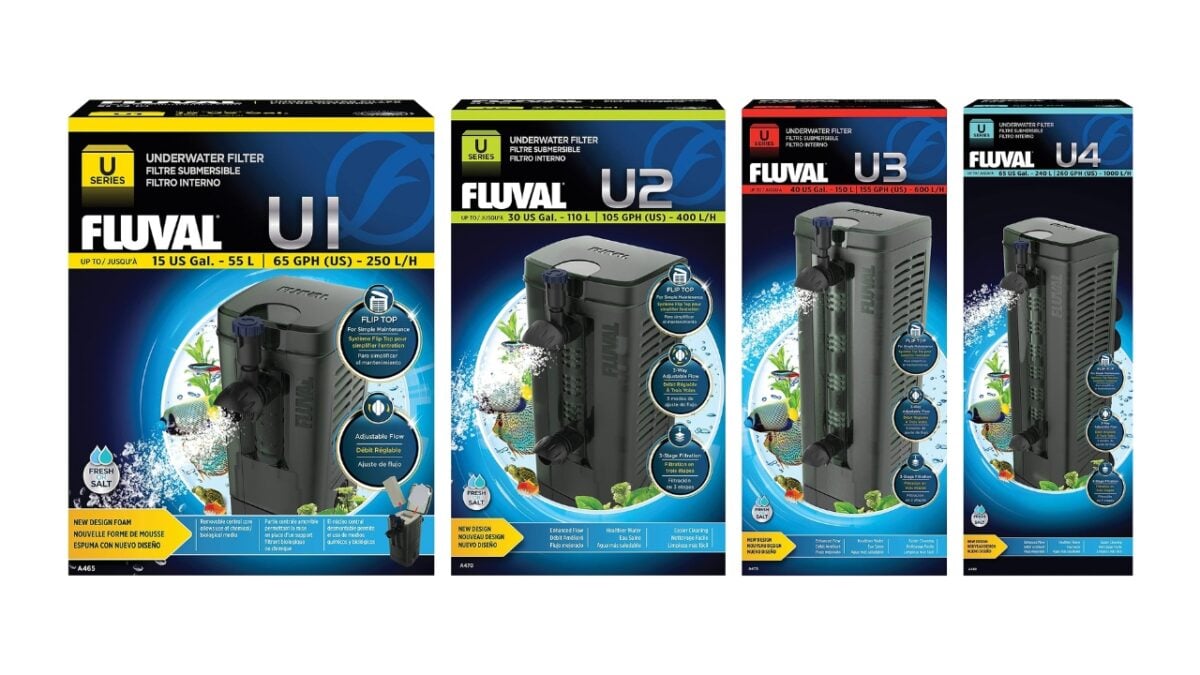
You may have heard differing opinions on whether goldfish need a filter in their tank.
I got my first goldfish over 30 years ago and managed to keep him until he was 15 years old so obviously did something right.
Yes, Goldfish Need A Filter
Goldfish need a filter in their tank. Why? Because goldfish are little eating machines that produce a lot of waste, they are not known as water piggies for no reason!
This waste can quickly pollute their water, and without a proper filtration system, your goldfish’s health may be at risk.
The key reasons why filters are vital for your goldfish tank setup are:
- Clean water: Filters help remove waste and debris from the tank, keeping the water clean and clear. This is essential for your goldfish’s health, as dirty water can cause illnesses and stress for them.
- Oxygenation: Goldfish require oxygen to breathe, and filters help aerate the water, ensuring they have the necessary oxygen levels.
- Improved health: Filtration systems not only remove waste but also break down harmful chemicals, promoting a healthier environment for your goldfish to live in.
There are different types of filters available, and I’ll go over the best choices further down in the post.
What Size Filter Do Goldfish Need?
When setting up a goldfish aquarium, you have to know what the right filter size is for maintaining a healthy environment for your finned friends.
So, how do you determine what size filter is ideal for your goldfish tank?
A general rule of thumb is to aim for a minimum of 5 times tank water volume turnover per hour. In simpler terms, your filter should be able to process the entire volume of the tank at least five times every hour.
Let me give you an example: if you have a 20-gallon tank, your filter should have a flow rate of 100 gallons per hour (GPH) at a minimum (20 gallons x 5 = 100 GPH).
To make things easier, I’ve created this reference table for you:
| TANK SIZE (GALLONS) | NORMAL STOCKING LEVELS | HEAVILY STOCKED TANK |
| 20 | 100 g/ph | 200 g/ph |
| 29 | 145 g/ph | 290 g/ph |
| 40 | 200 g/ph | 400 g/ph |
| 55 | 275 g/ph | 550 g/ph |
| 75 | 375 g/ph | 750 g/ph |
| 90 | 450 g/ph | 900 g/ph |
| 100 | 500 g/ph | 1000 g/ph |
This table serves as a guideline for the minimum filtration requirements.
What Type Of Filter Do Goldfish Need?
There are 3 types of filters suitable for goldfish tanks and 1 I’d avoid.
My preferred goldfish tank filtration setup is a Fluval canister filter paired with 1-2 sponge filters connected to an air pump.
This setup ensures you always have an established sponge filter on hand to add to a new aquarium or hospital tank, should you ever need to medicate your fish.
1. Canister Filters

This is my No.1 recommendation for a goldfish tank.
Canister filters are known for their great performance, making them a popular choice among fish enthusiasts.
Canister filters are placed outside the aquarium, so don’t take up valuable space inside the tank, all you have are the intake and outtake pipes to circulate the water.
They provide strong filtration and high flow rates which is necessary to deal with the amount of waste produced by goldfish.
Although canister filters tend to be more expensive and bulky, they offer a much-needed filtration capacity for goldfish.
I’m a huge fan of the Fluval 07 series filters, having owned a 407 for years.
2. HoB Filters

Hang-on-Back (HoB) filters are another type of external filter.
As the name implies, they simply hang on the back of your aquarium. HoB filters are known for their ease of installation and lower costs when compared to canister filters.
But, you may end up having to fit 2 of them on a goldfish tank since their filtration capacity is not as strong as canister filters.
If you have a smaller aquarium, a HoB filter might be the right choice for you.
My top recommendation for a HoB filter is the Hagen AquaClear.
3. Sponge Filters

Sponge filters are cheap, reliable, and great in small aquariums. In goldfish tanks, you will need a few (depending on tank size and stocking) to provide adequate filtration.
They do take up space inside your fish tank, so that’s something to consider if your tank is already on the small side.
One benefit is that they have lots of surface area enabling plenty of good bacteria to colonize, you can also add an air pump and stones to keep the tank well-oxygenated, something that goldfish require.
4. Internal Filters (The one I’d avoid!)

Internal filters, like the Fluval U series, are submerged within the aquarium.
I’m not a fan of this type of filter for a goldfish tank. They work best in smaller aquariums with a low bioload, plus they take up a good chunk of swimming space within the aquarium.
I find they are cumbersome and ugly, and the other 3 options are just generally better.
To recap the above points:
| FILTER TYPE | PROS | CONS | BEST FOR |
| Canister Filters | Strong filtration, high flow rates, easy installation, don’t take up space in the aquarium | More expensive, bulky | Larger goldfish tanks |
| HoB Filters | Easy installation, lower cost | Limited filtration capacity | Smaller goldfish tanks |
| Sponge Filters | Easy installation, cheap, reliable, and easy to maintain, can add an airstone/bubbler | Take up space in the aquarium | Small tanks or paired with canister or HoB filters in larger tanks |
| Internal Filters | Easy installation and maintenance | Take up space in the aquarium, poor filtration capacity, ugly | Low bio-load aquariums |
How A Goldfish Filter Works

1. Mechanical Filtration
This process removes debris and solid waste from the water. As the water passes through a sponge, foam, or filter floss, it traps physical particles, preventing them from dirtying your goldfish tank.
Remember to clean or replace this part of the filter regularly to maintain its efficiency.
Mechanical filtration is what keeps your water clean and clear, and free of floating debris
2. Biological Filtration
Biological filtration is crucial for breaking down harmful ammonia and nitrite produced by your goldfish. Beneficial bacteria grow on porous surfaces within the filter, such as filter media, ceramic rings, or bio-balls.
These bacteria convert toxic ammonia into less harmful nitrite, and eventually into relatively harmless nitrate. This process, called the nitrogen cycle, is vital for your goldfish’s well-being.
Biological filtration is the most important, it’s what keeps the water safe for your fish
3. Chemical Filtration
Chemical filtration is responsible for removing unwanted chemicals from the water. Activated carbon or other chemical filter media absorb harmful substances like chlorine, heavy metals, and organic compounds.
This keeps your goldfish safe from toxic elements in the water. You have to replace the chemical filter media periodically to ensure it continues to work effectively.
One thing to note with chemical filtration, you need to remove it if treating your tank with medication as it will absorb it, making the medication useless.
Chemical filtration is optional and not necessary for the overall health of your aquarium
3 Simple Steps To Maintaining a Goldfish Filter
Keeping your goldfish healthy requires maintaining a clean and stable environment, which includes proper care of the filter.
To make sure your filter is working efficiently, regular maintenance is required. Here’s a simple yet effective routine you can follow:
1. Check Filter Media
Inspect the filter media (such as sponge, filter floss, bio-balls, etc.) every week. Replace or clean them if they look clogged or dirty.
Reusable media like sponge filters should be rinsed out in tank water.
Never use tap water for this purpose. Tap water contains chlorine, chloramine, and other chemicals that will kill your nitrifying bacteria.
2. Clean The Filter Parts
While you’ve got your filter disassembled for cleaning the media, don’t forget to thoroughly clean its parts using a bottle brush and tank water.
Avoid using soap or detergent as these chemicals may harm your goldfish.
3. Replace Filter Parts
Over time, some parts of your filtration system may degrade or lose efficiency.
Consult the manufacturer’s guidelines to determine when to replace specific parts, such as impellers, motors, or cartridges.
Manufacturers like Fluval have replacement parts that are easily available to keep your filter running.
Closing Thoughts On Do Goldfish Need A Filter?
So, do goldfish need a filter? After reviewing the facts, the answer is a resounding yes!
Let’s quickly recap why filters are crucial for your goldfish’s health and wellbeing:
- Waste management: Goldfish are notoriously messy eaters, producing a lot of waste. A filter helps keep their environment clean by removing waste and debris from the water. Without a filter, the water quality can deteriorate quickly.
- Oxygen supply: Filters also play a significant role in aerating the water. Properly oxygenated water is essential for goldfish to breathe and thrive. A lack of oxygen can lead to stress and health issues over time.
- Long-term health: Goldfish can live long and happy lives if provided with the right setup. A filter is a vital part of that. With a filter keeping their environment clean and stable, goldfish are more likely to stay healthy and grow properly.
In summary, a well-maintained and efficient filter is a non-negotiable part of providing a clean and healthy environment for your goldfish.
By investing in a good filter that can sufficiently handle the waste that goldfish produce, you’re not only ensuring their survival but also giving them the best possible chance at a long and happy life.
Check out the Aquarium Health section for more guides just like this one, to keep your tank in tip-top shape.
